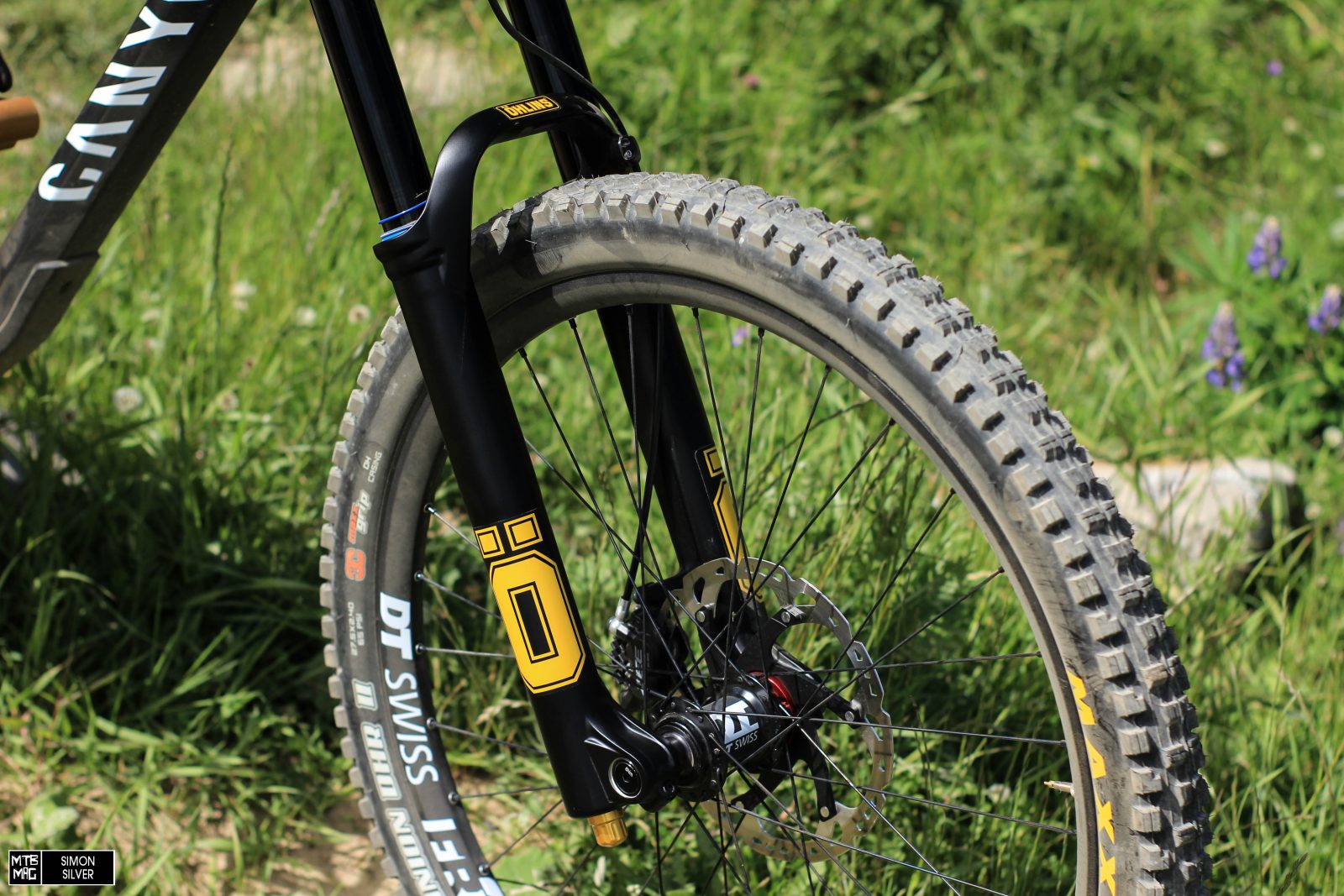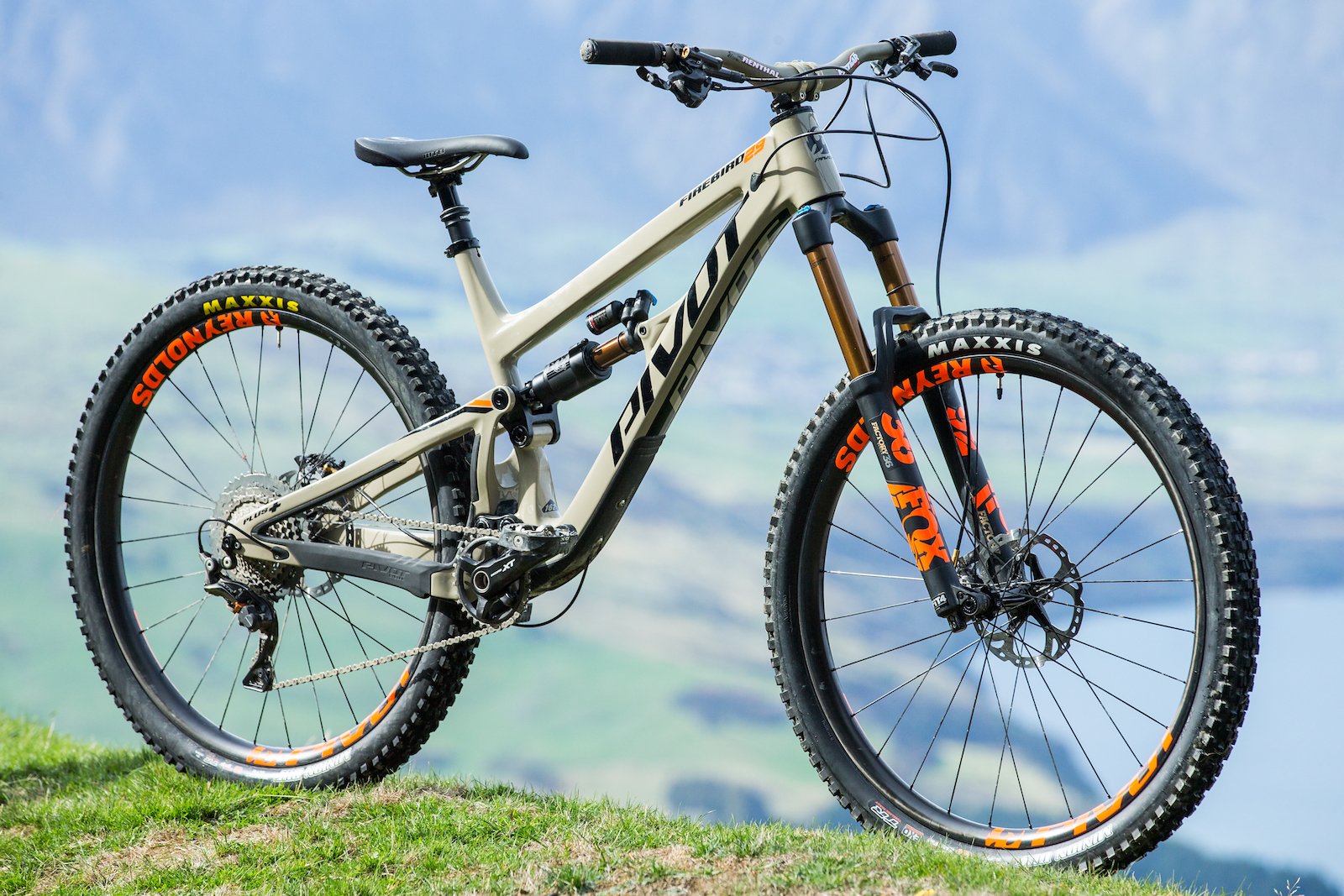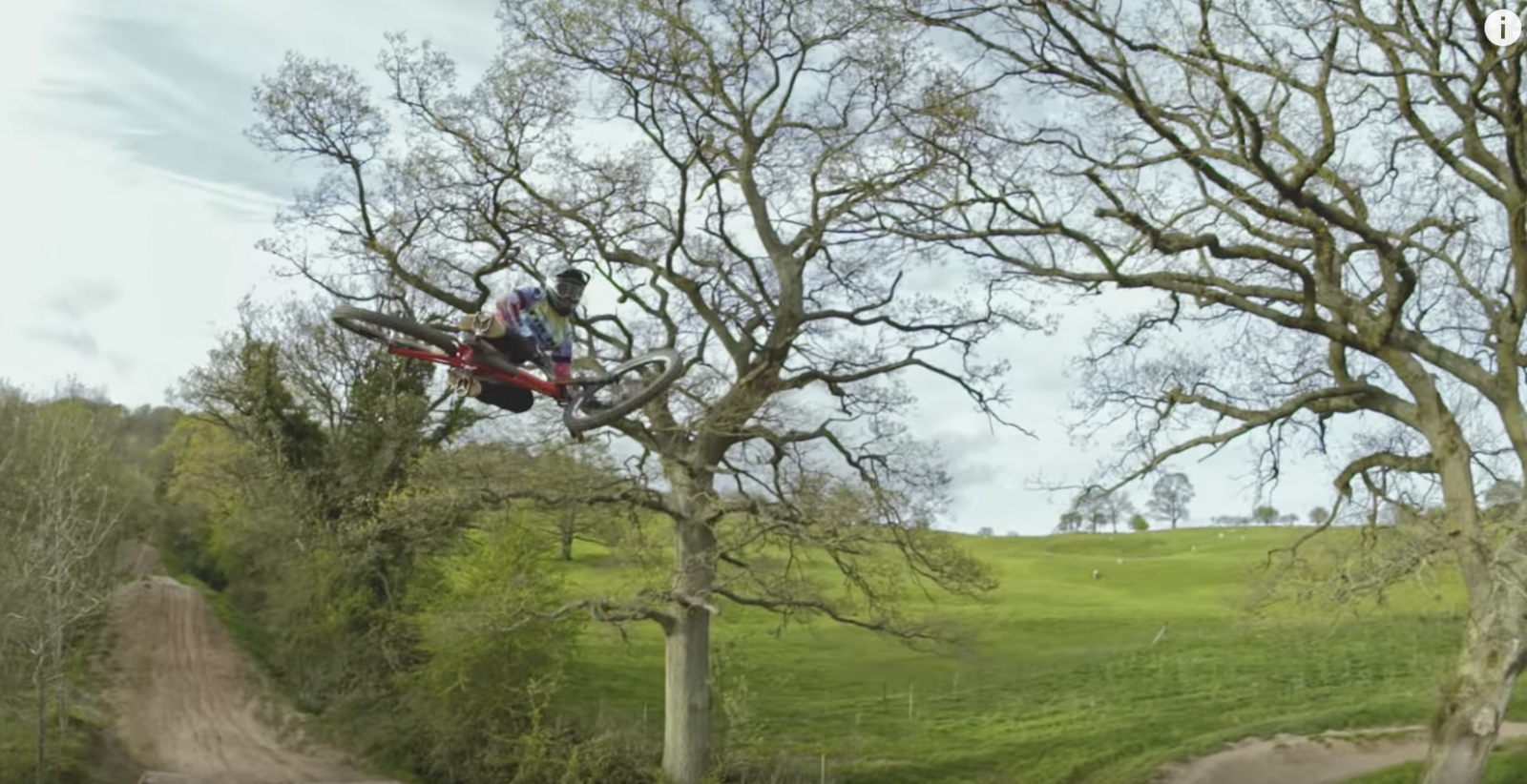We recently were invited to Stockholm, Sweden to check out the Öhlins HQ, and ride the new TTX DH Race Fork. The fork is two years in development in conjunction with Team Specialized Gravity. The main fork retails for $1600 USD, the crowns for $350, and the cartridge system for either Boxxer or 40 comes in at $749.
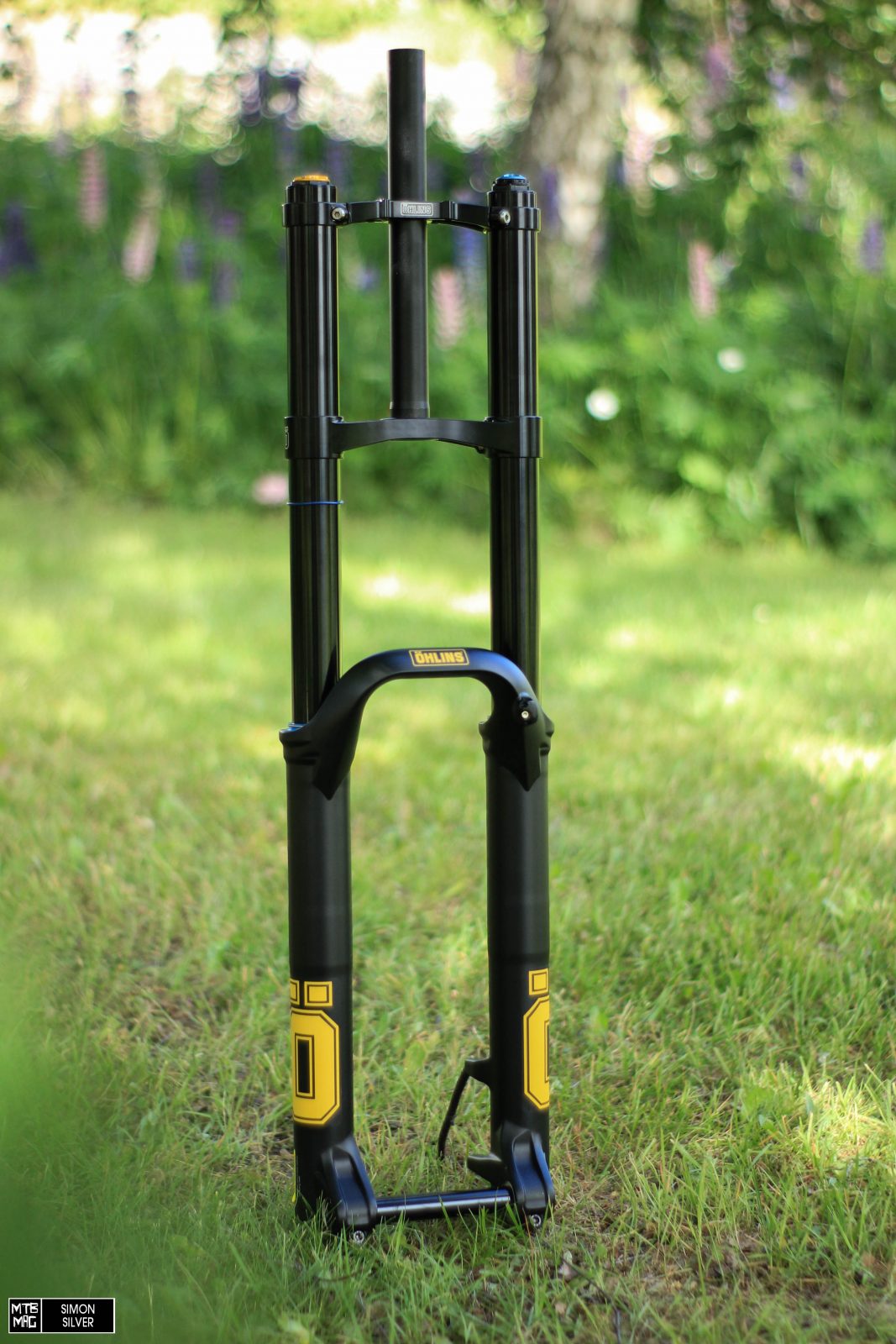
Specs

The Fork features 15 clicks of low speed compression and low speed rebound, and 4 clicks of high-speed compression. The twin piston three chamber air spring system is isolated from the upper tubes to reduce heat build up, and features Total Tune Spring Curve System (TTSC) allowing total air spring tuning from the initial movement through to the bottom out. The TTX Cartridge features a steel spring, not a bladder, making the risk of cavitation impossible.
All of these features are also present in the TTX 18 Cartridge kit, made to drop into Fox 40, and RockShox Boxxer Chassis’s. We’re currently testing the Boxxer Kit, and will have a long-term review coming soon.

The fork features a DH Boost 20×110 through axle clamped on both legs. Got non-boost hubs? Simply add a 5mm spacer between your rotor and hub, and you’re all set.

Upper crowns for both 27.5″ and 29″ wheels come in offsets of 46/50/54/58. A2C range for 29″ is 608-620, and 27.5 is 590-604.

Öhlins doesn’t have a mud guard that comes with the fork yet, but they smartly included 2 small threaded holes for possible future integration. The Öhlins crew also went with SKF seals, finding them to be the best option for dust and mud resistance, and minimum friction. The lower legs come in only one size, applicable for 27.5″ and 29″ wheels.

The graphics are a simple decal featuring the legendary Öhlins yellow Ö emblem on the front legs, which in the future, will likely be offered in different colors.

The upper assembly features the air cap leading to the twin tube, self equalizing chamber on one side, and the high/low speed compression on the other. Low speed rebound is found under a protective cap on the bottom of the left fork leg, and an air valve on the right that leads to the bottom out chamber.

The air spring assembly is a fully stand alone design made for easy removal and service

Öhlins will have a fully interactive Air Spring guide on their website soon, allowing riders to understand fully how to set up their fork just right.

In addition to the rider choosing the offset they want, how they want their spring curve to feel, they also have multiple rebound and compression set ups to choose from.
First Ride
We rode a few bike models with the new TTX Race Fork, in the Järvsö Bikepark. We’ll highlight our time on the Canyon Sender, as we were most comfortable on it, and spent the most time tuning the suspension on that bike.
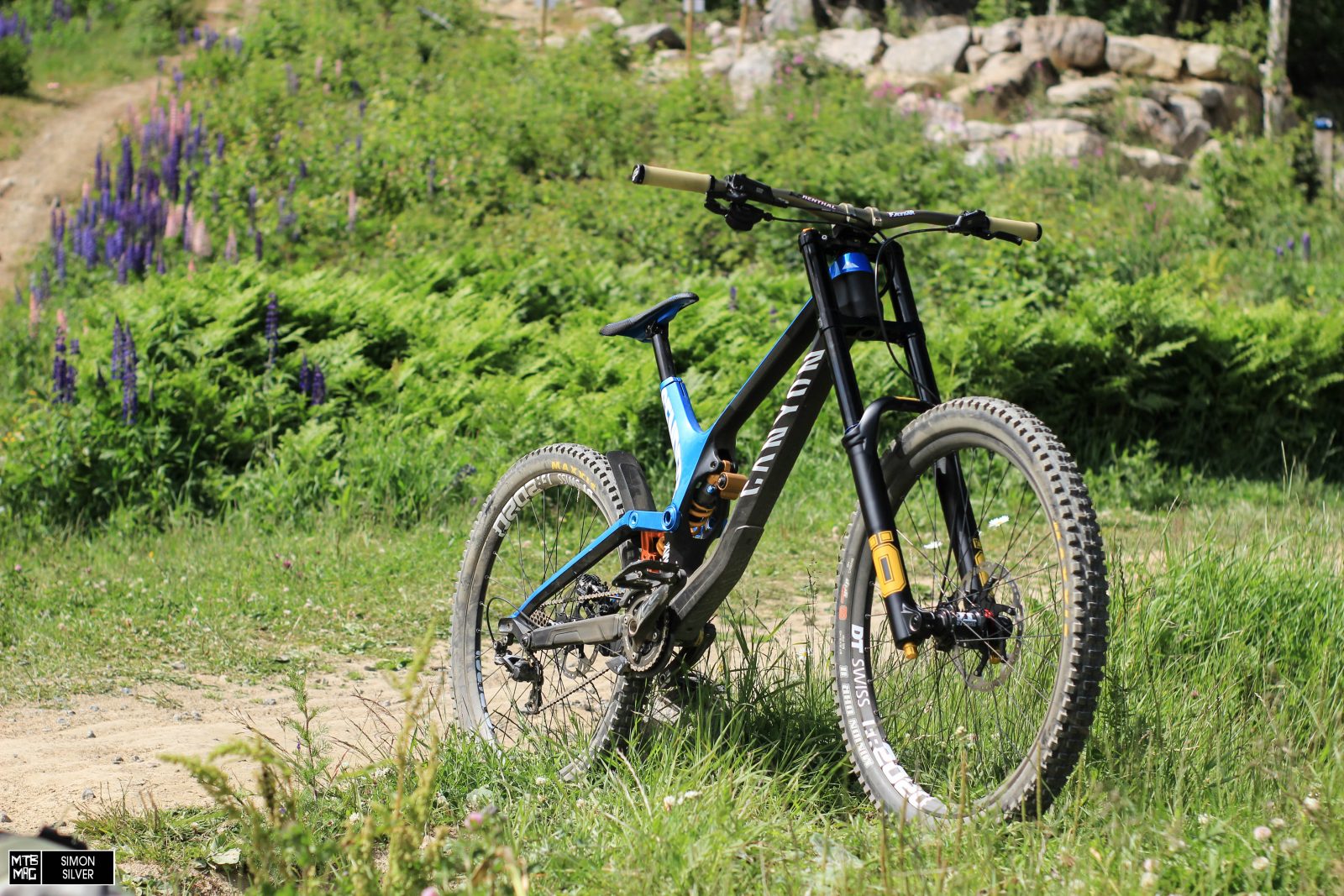
The Canyon Sender 27.5 was a stiff bike, with minimal flex, and a potentially rougher ride then say on the Commencal Supreme 29’s that were on hand.

The Sender was of course equipped with a TTX coil shock in the rear, proving to be a smooth ride once spring rate and compression were dialed in.

We started off on Öhlins recommended base settings. The Canyon felt great off the top, but in the rough terrain, it felt a bit un-supported mid to deep into the travel, as well as feeling like it couldn’t recover in time. Voicing our thoughts to MTB Team Leader, and race tech for Team Specilized TJ Hansen, we upped our ramp up chamber in the lower leg by 10 psi, added 2 clicks of rebound, and one click of of high speed compression.

With only 4 clicks of high speed compression, each change is very noticeable. We reverted to having high speed backed off, in the name of a smoother ride. We’d guess that for the most part only serious riders like Loic Bruni will up their high speed compression more then 2 clicks. The rest of our modified settings really helped keep the front end up, and proved to be more confidence inspiring in the rocks, as well as landings.

The 38mm chassis of the TTX felt like the perfect compromise between stiffness, and flexibility. The 29″ ready lowers didn’t bother us on our 27.5″ Canyon, there’s no noticeable added flex, they don’t look out of place, and with the proper crowns, normal front end heights are achieved.

It’s likely that consumers in the Downhill segment who mount up the TTX fork on their bike will gain a fondness for the fork, the more they learn about it, and tune it to their needs. That being said, not every rider wants to go in depth about understanding rebound curves, and compression valving.

We imagine that Ohlins base settings will be more than adequate for most riders, and anyone needing more out of their fork will be able to dive deeper and fine tune the product to fit their riding style.
With World Champs wins, and Fest Series gaps under it’s belt, we envision a bright future for the Ohlins TTX DH Race Fork. Some folks might cringe at the price of changing crowns etc, but likely those people may not need the intricacies this tunable product can offer. The great part is if you’re already a Boxxer or 40 owner, and you’re looking to switch things up and/or get more tune-ability out of your fork, for a reasonable price you can have that Ohlins level performance.
More info at Ohlins Bike

